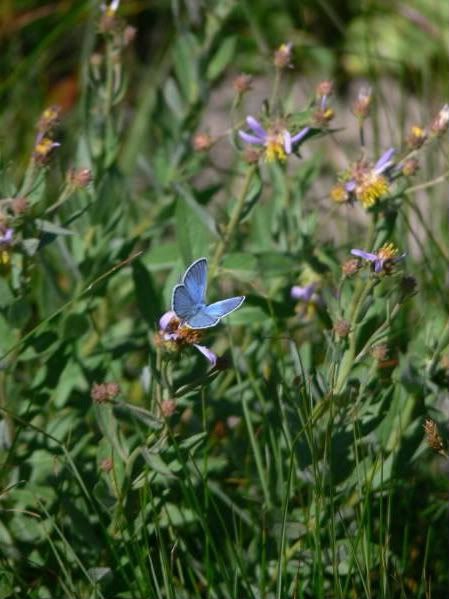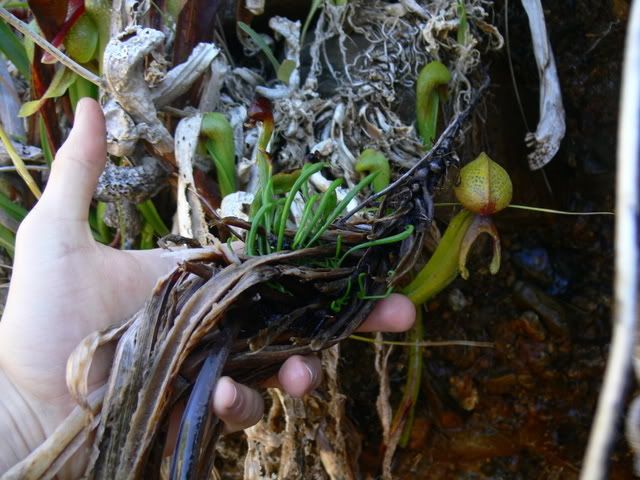We just moved into a new house. Just like with my last house, we are stripping the yard entirely and redoing it one plant and stone at a time. This yard we have huge goals to meet, so I'm not going to show the pictures of the tear down until we have some uplifting images of the build up.
Our last house took us 3 years to do the yard. This one will be about the same. I'm hoping that by Fall 2011, I'll be able to call it my own. Here's some of our little backyard in the Fall right before we sold the old house. When we moved in the whole yard was just dead weedy grass and a tree. We put in every shrub, small tree and perrenial. Thanks to a lot of hard work, Craigslist, Portland Nursery, help from friends and family, it looked great.
Our Previous backyard after 3 years of hard work:

Anyhow, You can see some of the partially torn up yard in the background of the pictures. It's a mess. Just ignore it.
Here's my Aloe that I've had since 2000. It weighs about 100lbs. It's hardy to about 28F, so in the harshest nights of the year, it has to be in the (soon-to-be) greenhouse. Hummingbirds love it. I got it from a single growth cutting from a friend in L.A. when her parents ripped out a whole bed of it.

My very first Federally Endangered species that I grew from seed to bloom: Echinaceae tenneseensis. Very easy to grow. Got (free) seed in the mail in accordance with CITES in Spring 2007 from a man in TN who was growing it on his property. I have 27 baby plants, and only one bloomed this year. In the next couple of years I'll have lots of seed to give away!

Here are my hundreds of Darlintonia seedlings. I grew these from seed started in Fall 2005. They are in partially alive LFSM and get watered as often as possible. I am going to try an experimental bog bed in my yard where the water is circulated down a slope (of mostly Turface MVP and Pumice), like in the wild. Hopefully that dream will become a reality in 2010 or spring 2011. Until then, they do fine as long as they get water twice a day and not too much sun. In the wild, the sunnier plants are shorter and the plants in 50-70% shade are taller and greener.

On the vein of Sarraceniaceae, here is S flava cuprea, the newest addition to my bog plant collection (soon to be permanent bog garden, spring 2009). Notice the new growths :-)

And last, my oldest hardy orchid. Got this Goodyera oblongifolia in Fall 2003 just as I was getting into this type of thing. It has proven to be one of the easiest to care for. It has 17 spikes this year.

Last year, it only had 3 spikes.
I'll post photos of yard progress as soon as there is some!




















































